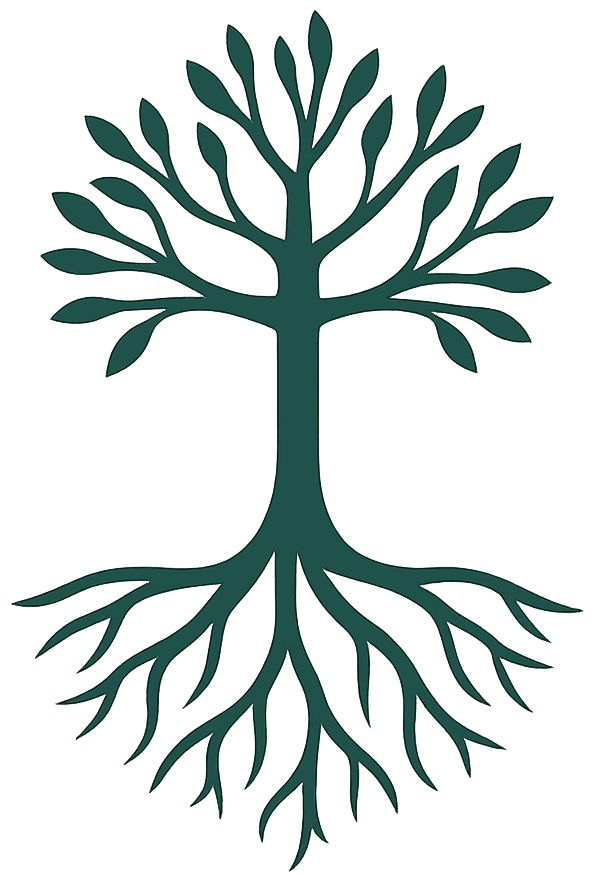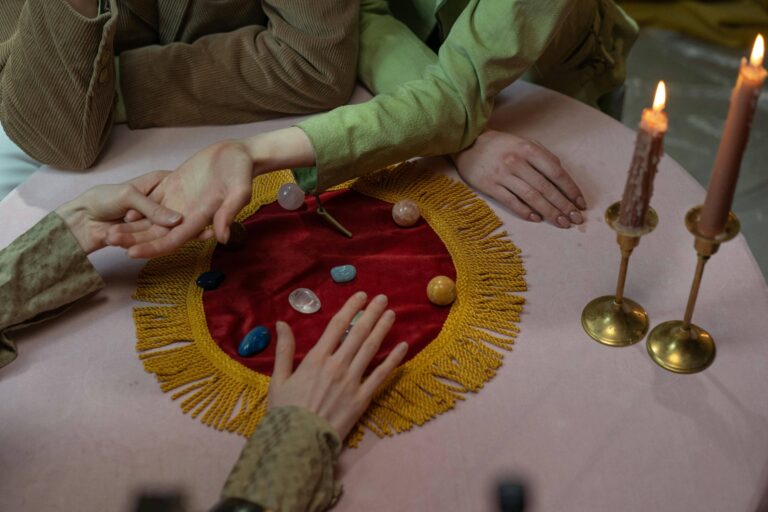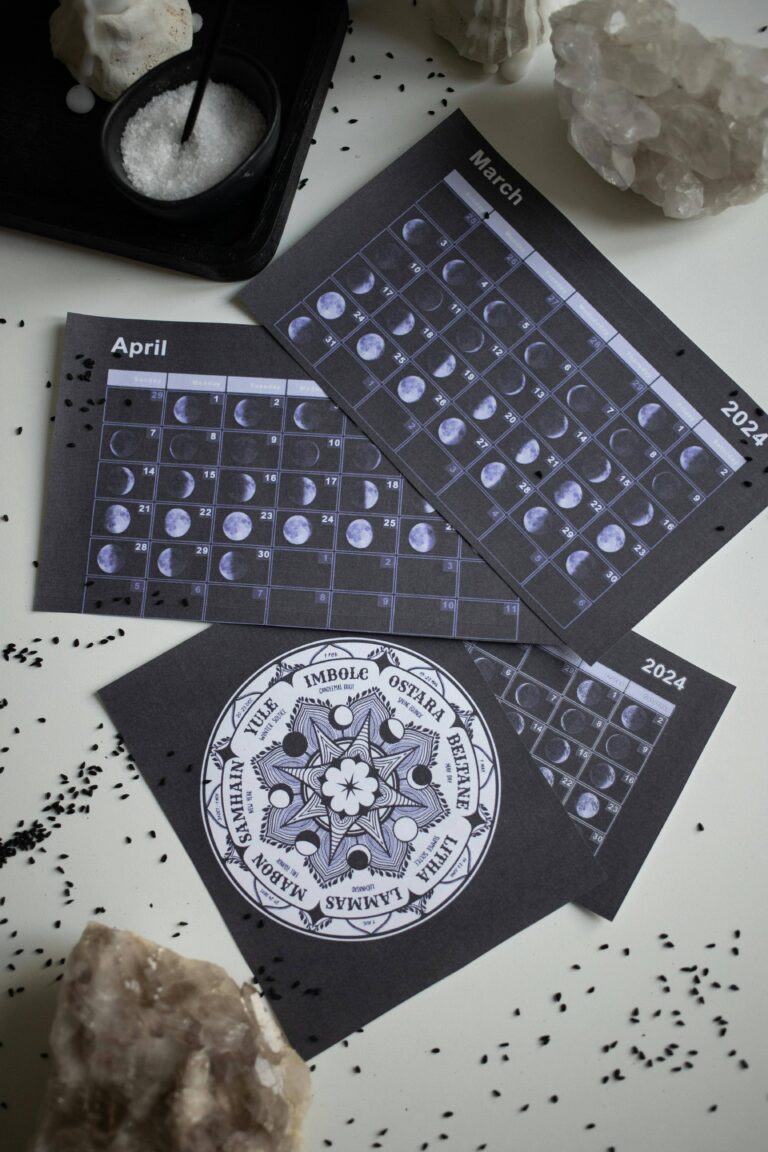Authoritative Writings
In contrast to orthodox Christianity, Wicca does not have a singular authoritative source, such as a bible. Rather, they use multiple sources to draw their beliefs and convictions from. As Wicca is constantly expanding and developing, there is a vast library of authoritative sources with varied and often conflicting perspectives leaning into many differing traditions and understandings of the Craft.1 As such, each Wiccan forms their spiritual practices from the sources that resonate with them and what speaks to their personal experiences.
Some notable sources of authority within Wiccan practice are the Wiccan Rede, Witchcraft Today, Complete Book of Witchcraft, and various other tools such as the Book of Shadows. This article will define each in turn and the core beliefs found within these sources.
The Wiccan Rede
Firstly, there is the Wiccan Rede, which is the most widely accepted rule among followers. The Wiccan Rede is as follows: “An ye harm none, do what ye will.” In other words, as long as you do not harm anything, do anything you wish.
However, the Rede is sometimes seen more as a guideline than an absolute rule, as in Wicca, the concept of taking responsibility for one’s own actions is paramount, rather than “deferring to some external moral authority” for guidance, and the definition of harm varies from practitioner to practitioner.2 As such, many Wiccans take the Rede as good advice to live by, rather than a hard and fast rule.3
Witchcraft Today
Another common authoritative source in the Wiccan practice is the book Witchcraft Today, published in 1954 by Gerald Gardner. The book recounts the history of Wicca and its practices, with Gardner claiming that there were witches in all ages and countries, beginning in the Stone Age.4 There is little differentiation in Gardner’s writings as to different cultural magical practices, with him instead stating that “witchcraft as it emerges into European history and literature represents the old Paleolithic fertility cult.”5 Much of Gardner’s information comes from his personal experiences speaking with witches.6
The Complete Book of Witchcraft
A third common authoritative source is the Complete Book of Witchcraft, published in 1986 by Raymond Buckland. It is divided into fifteen “lessons” in a comprehensive guide and workbook for introducing beginners to Wicca. Buckland states that the purpose of this book is so that individuals or a group can “do your own thing… or become an initiated participant.”7 He agrees with Gardner’s assertion that Wicca’s history began in the Paleolithic times,8 and Gardner’s assertion of Wiccan beliefs,9 and the remainder of the book is devoted to practical explanations of Wiccan practices.
Wiccan Tools
One of the primary tools that Wiccan practitioners use is a Book of Shadows, a journal in which they write spells, rituals, herb mixtures, or anything related to their magic and practice.10
Other tools used in Wiccan practice are tarot cards, pendulums, and channeling. Tarot cards are believed to reflect inner truths and reveal hidden knowledge, with the “unseen” communicating through them.11 Pendulums work by holding them above a diagramed card inscribed with “YES/NO.” By asking a question, the weight should swing to indicate an answer.12 These tools are meant to be a point to channel one’s psychic powers,13 and there is no inherent power within the tool itself. Wiccans believe all humans have psychic abilities such as channeling, which is to “[tap] into the collective consciousness in order to obtain needed information.”14 This is manifested in different ways, depending on the person.
Core Beliefs
The first core belief found within these authoritative texts is the presence of a higher power in the form of a God and Goddess. As described in the Complete Book of Witchcraft by author Raymond Buckland, there is the “Ultimate Deity [who] was equated with both masculine and feminine… broken down into a God and a Goddess… everywhere in nature is found this duality.”15 Buckland goes on to say that one can see this duality in other religions that use different names for them.16 Gardner also references the God and Goddess of Wicca in Witchcraft Today, mentioning that the coven that initiated him worshipped a god and goddess, and this practice allegedly extended back to the “beginning of time.”17
According to Buckland’s practice,18 Wiccans call the God and Goddess the “Horned God of Hunting and the Goddess of Fertility.”19 The God is over winter, and the Goddess is over summer, and seasonally Wiccans celebrate “Sabbats” to rejoice with them.20 In covens, the priest and priestess represent the God and Goddess.21
Another core belief in Wicca is reincarnation. Witchcraft Today describes the beginnings of reincarnation through the “Myth of the Goddess.” The Goddess,22 “Great Mother” and “giver of life,”23 descended into the underworld to demand that Death stop causing that which she delights in to die. Death tells the Goddess that it is fate that causes all living things to die, and that he simply provides them with peace.24 The Goddess is scourged on behalf of the living things and learns the mysteries of Death, gaining the ability to “overcome death by transforming it into rebirth.”25
In the Complete Book of Witchcraft, Buckland claims reincarnation is the “most logical explanation of much that is found in life.”26 The concept of karma is what Wiccans call the “threefold” retribution.27 Whatever good or bad one does during this life will be returned in the next. Gardner adds that “the gods teach us to look forward to the time when we be not men anymore, when we become one with the Might Ones.”28
The last core belief is the use of magic. Buckland says, “there are many people who seem… to have some sort of ‘psychic power’… Witches have always believed in this power coming from the body and have developed ways to increase it, collect it, and use it.”29
Conclusion
While there is no singular source of ultimate authority in Wicca, such as a bible, there are many authoritative sources in Wiccan practice that support core beliefs such as magic, reincarnation, and the God and Goddess. Depending on one’s personal beliefs and inclinations, the practitioner can choose to follow the sources that align with them best.
- Lisa Chamberlain, “Ultimate Guide to Wiccan Books,” Wicca Living, July 6, 2021, https://wiccaliving.com/best-wiccan-books/. ↩︎
- Lisa Chamberlain, “The Wiccan Rede,” Wiccaliving, 2023, Accessed March 4, 2025,
https://wiccaliving.com/wiccan-rede/. ↩︎ - Ibid. ↩︎
- Gerald B. Gardner, Witchcraft Today (London: Rider and Company, 1954), 15. ↩︎
- Ibid, 59. ↩︎
- Ibid, 4. ↩︎
- Raymond Buckland, Buckland’s Complete Book of Witchcraft (St. Paul, MN: Llewellyn Publications, 1986), i. ↩︎
- Ibid, 1. ↩︎
- Ibid, 13-24. ↩︎
- Wikipedia, “Book of Shadows,” Wikipedia, February 21, 2025, accessed March 5, 2025,
https://en.wikipedia.org/wiki/Book_of_Shadows. ↩︎ - Lisa Chamberlain, “The Witch and the Tarot: A Wiccan Guide,” Wiccaliving, 2023, Accessed March 4, 2025, https://wiccaliving.com/witch-tarot/ ↩︎
- Raymond Buckland, Buckland’s Complete Book of Witchcraft, 103-104. ↩︎
- Raymond Buckland, Buckland’s Complete Book of Witchcraft, 112. ↩︎
- Ibid, 101. ↩︎
- Raymond Buckland, Buckland’s Complete Book of Witchcraft, 13. ↩︎
- Ibid, 14. ↩︎
- Gerald B. Gardner, Witchcraft Today, 12. ↩︎
- Depending on the Wiccan’s tradition, they might refer to the God and Goddess by another name, or perhaps not even believe in them as the only two gods at all. See the article on Wicca’s Distinctive Doctrines for more information. ↩︎
- Raymond Buckland, Buckland’s Complete Book of Witchcraft, 13. ↩︎
- Gerald B. Gardner, Witchcraft Today, 84. ↩︎
- Raymond Buckland, Buckland’s Complete Book of Witchcraft, 53. ↩︎
- In Gardner’s writings, the God is not mentioned as prominently as the Goddess, while in Buckland’s writings, the two are mentioned more equally. As such, the God does not appear in this myth. ↩︎
- Gerald B. Gardner, Witchcraft Today, 24. ↩︎
- Ibid, 23. ↩︎
- Ceisiwr Serith, “The Legend of the Descent of the Goddess,” Ceisiwrserith.com, 2019, https://www.ceisiwrserith.com/wicca/legendofthedescent.htm. ↩︎
- Raymond Buckland, Buckland’s Complete Book of Witchcraft, 17. ↩︎
- Ibid, 18. ↩︎
- Gerald B. Gardner, Witchcraft Today, 90. ↩︎
- Raymond Buckland, Buckland’s Complete Book of Witchcraft, 10-11. ↩︎
Works Cited
Buckland, Raymond. Buckland’s Complete Book of Witchcraft. St. Paul, MN: Llewellyn Publications, 1986.
Serith, Ceisiwr. “The Legend of the Descent of the Goddess.” Ceisiwrserith.com, 2019. https://www.ceisiwrserith.com/wicca/legendofthedescent.htm.
Chamberlain, Lisa. “The Wiccan Rede.” Wiccaliving. 2023. Accessed March 4, 2025. https://wiccaliving.com/wiccan-rede/.
—. “The Witch and the Tarot: A Wiccan Guide.” Wiccaliving. 2023. Accessed March 4, 2025. https://wiccaliving.com/witch-tarot/.
———. “Ultimate Guide to Wiccan Books.” Wicca Living, July 6, 2021. https://wiccaliving.com/best-wiccan-books/.
Gardner, Gerald B. Witchcraft Today. London: Rider and Company, 1954.
Schnoebelen, William. Wicca. Chino, CA: Chick Publications, 1990.
Stanley, Tim. “Give Me That Old Time Religion.” History Today 63, no 8 (2013): 50. https://research-ebsco-com.lili.idm.oclc.org/linkprocessor/plink?id=9c478d6f-de49-318d-8c58-c6fde25e2330.
Wikipedia. “Book of Shadows.” Wikipedia. February 21, 2025. Accessed March 5, 2025. https://en.wikipedia.org/wiki/Book_of_Shadows.
Featured photo courtesy of RDNE Stock project via Pexels. Used for educational purposes under fair use.






